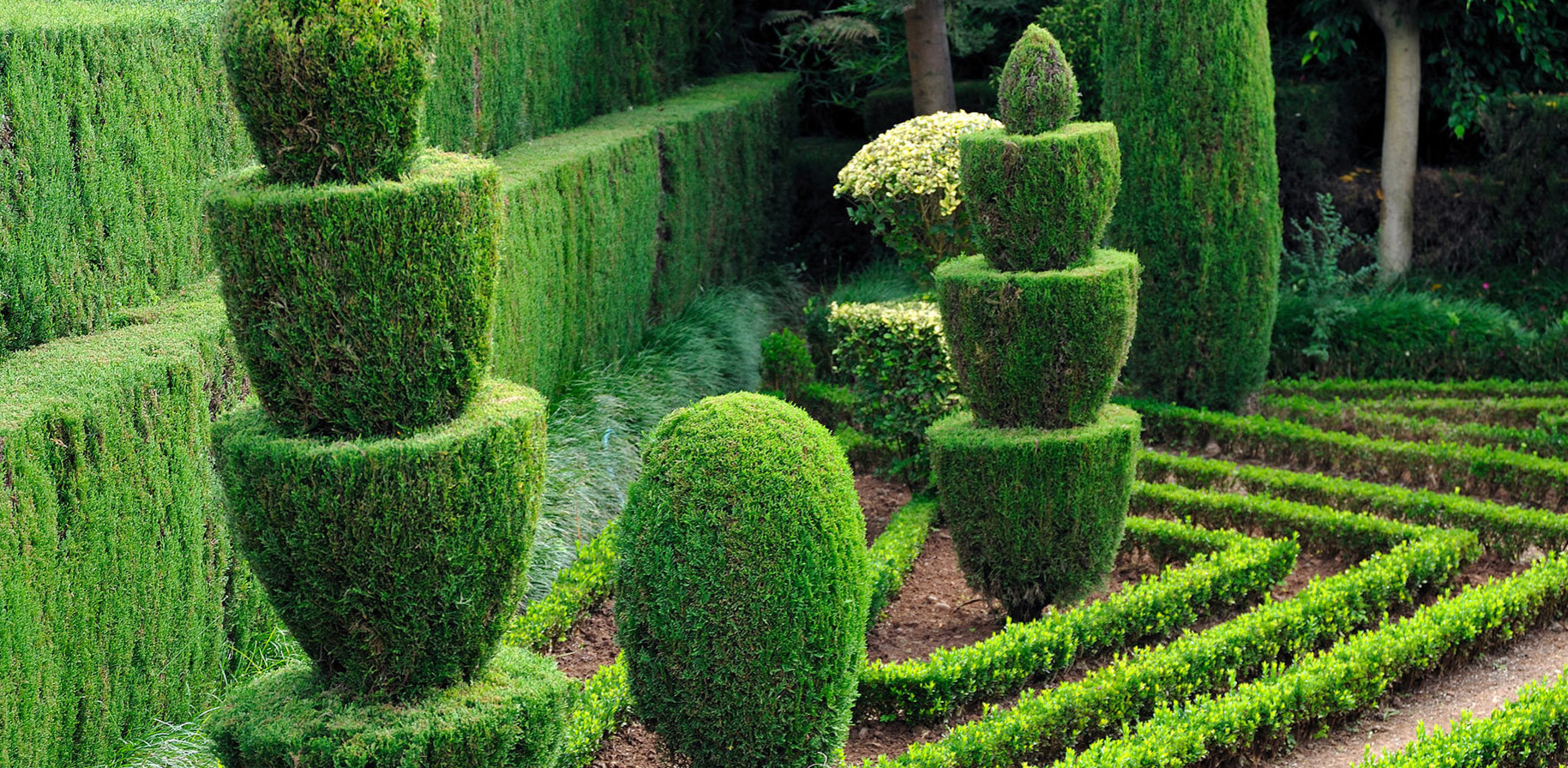Ever wondered how to make an 8-foot hedge horse?
Posted on 14th June 2022 at 10:53
Here’s everything you need to know about perfecting your Buxus.
Buxus, also known as box hedging, boxwood or just box, is the foundation of formal gardens and contemporary designs. It can be put in pots, grown into thick hedges and styled as extravagantly as required. In this blog we uncover everything you need to know to perfect your Buxus, including how to grow and shape your lavish shrubbery so you can bask in your Alice In Wonderland-esque garden in style.
Why Buxus?
Buxus is very popular as it can tolerate shade, drought, pollution and tougher growing conditions, making it a very versatile shrub. It’s also the best type of hedging to grow for topiary as it is thick and consists of small, glossy leaves. Because of the smaller leaves, the hedging is easier to cut, therefore less likely to leave big gaps in the plant that are noticeable and that will ruin the aesthetic.
Key Fact: Buxus is a great shelter for loads of wildlife all year long.

How to grow
Where to plant:
Buxus is ideal for a wide range of soil types, as long as there is good drainage. If growing in full sun, moist soil is a must to ensure the foliage doesn’t dry out. It can be planted in large containers and pots, grown in rows as hedging, or even underneath taller trees.
When to plant:
Spring and autumn are ideal conditions for Buxus to be planted, although it can be planted all year round so long as the ground isn’t frozen.
How to plant:
Before you plant your Buxes it needs a good soak. Leave to stand in water for a good 10 minutes before putting it in the ground. For ground planting, dig a spade deep. A wide depth encourages the roots to spread out, so dig as wide as you want them to grow. For hedges, plant each roughly 30-40cm apart, but don’t overcrowd with other plants. Box hedging needs good air circulation around them.
To grow in containers, perfect for topiary clipping, use a container at least 45cm in diameter and a spade deep.

How to care for Buxus
Watering:
Young or newly planted box plants should always have moist soil, but certainly not waterlogged. Buxus plants in the ground shouldn’t need watering unless there are exceptionally long dry spells. Plants in containers should be watered regularly all year round.
Feeding:
Box can become starved by lack of feed, especially when left in the same soil for years. This results in weak growth and discolouration, certainly not something you want to plague your colourful garden. Feeding once or twice a year for ground-planted Buxus with feed or mulch will provide all the nutrients they need and maintain the dark, rich colour. In containers, the Buxus should be fed more often with liquid feed.
Shaping and trimming
Buxus plants can live for a long time and be grown up to a whopping 16 foot, so trimming is usually essential.
The first soft growth of leaves can be a target for frost damage. To avoid this ruining your shrubs, always trim in summer so that it has time to grow before the cold weather hits.
Young plants should be cut back by up to a third in May in order to encourage new bushy growth. Mature plants are best shaped in early spring and again mid to late summer once growth starts to slow. Older plants that have not been cared for usually respond better to hard pruning around May.
To shape, go gently to start with, as more can be taken off but it can’t be put back on! Continue around the plant, turning regularly to keep an even shape. Don’t forget to stand back and enjoy your work once complete.
Top Tip: when trimming, don’t forget to lay down a ground sheet first to help with the clean up afterwards.
For more info and to watch how to trim your hedging, watch our video here: (link to video)
Last but not least, for all your Buxus and other planting needs, visit the Humber Bridge Garden Centre where our happy and helpful team can assist with any questions and help you may require.
Share this post:



